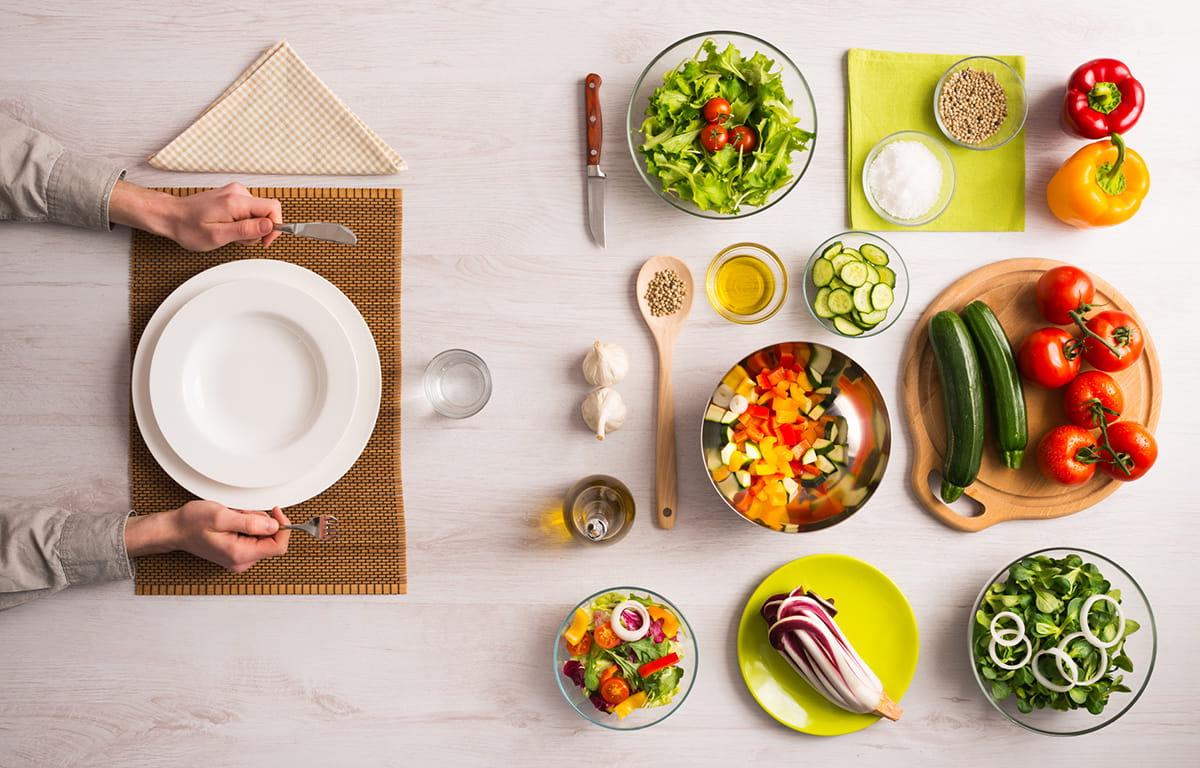份量和份量

Portion size and serving size are often used interchangeably, but they have a distinct and important difference. Portion size is the amount of food you choose to put on your plate and actually eat. Serving size is the amount of a specific food or drink that people typically consume. Serving sizes are set by the Food and Drug Administration (FDA) found at the top of the Nutrition Fact labels on packaged food and drink to help consumers make informed choices. The serving size is shown as a common household measure appropriate for that food.
Portion sizes of food prepared outside the home has increased significantly over the years and exceed federal guidance for dietary guidance and food labels. In addition, eating food out at a restaurant or ordering it for takeout/delivery has become increasingly popular. This contributes to the rise rates of overweight and obesity.
Because larger portion sizes often lead to an excess of calories eaten, consider what’s on your plate to help manage your intake.
那么它是怎么变成这样的呢?
A century ago, there were about 3400 calories of food available for every U.S. citizen. Today, there are over 4000 calories available per person—an additional 600 calories, 大约多20%的可用热量.
Understanding healthy portions can be challenging. Here’s why:
- 我们很多人都不知道什么是健康的份量.
- 餐馆提供面包等额外服务, chips and other appetizers that add extra calories, sodium and fat but lack any nutritional benefit.
- Some meals have portions that are enough for two or more people.
- Many convenience foods and drinks are priced lower but packaged in larger sizes to sell more.
消除困惑.
根据美国.S. Dietary Guidelines for Americans, here are a couple of important definitions:
- Portion 是你一次选择吃多少食物, 无论是在餐厅, 从包装上或在你自己的厨房里. 有一部分是百分之百在我们的控制之下. Many foods that come as a single portion actually contain multiple servings.
- 服务规模 食品的含量是否列在产品的标签上 营养成分标签. So all of the nutritional values you see on the label are for the serving size the manufacturer suggests on the package.
一旦我们理解了其中的区别, it’s easier to determine how much to serve and easier to teach kids the difference between the two. Learn some 每组食物的建议食用量 you and your kids can eat at mealtime or between meals.
我们怎样才能吃得少一点?
- 在家做饭时: Offer the proper “serving” to each member of the family, then put the extra food away. 把剩菜留到下次吃.
- 外出就餐时: Skip the appetizers and split a large salad or main dish with a friend.
- 在家叫外卖时: Eat one slice of pizza instead of two and order a small instead of a medium to split among the family so the pieces are smaller.
- 在家或在剧院看电影: Don’t eat while watching TV or a movie or when you’re on the computer. It’s harder to control how much you’re eating if you don’t pay attention to what you’re putting in your mouth, and when. At the movies, share a box of popcorn, and avoid the free-refill tubs and skip the candy.
- 在吃零食的线上电子游戏飞禽走兽: 不要直接从袋子或盒子里吃东西. 量出零食, 包括水果和蔬菜, into appropriate portion sizes before giving them to your kids.
- 一直以来: Using a food diary can help you pay closer attention to what you're eating, how much and how often.
You may be surprised to learn these are serving sizes:
- 一片全麦面包
- 1/3杯米饭
- 半杯煮熟的意大利面
- 1 small piece of fruit (super-large apples are 2+ servings)
- 1角甜瓜
- 8 fluid oz. 100%果汁
- 一杯脱脂或低脂牛奶
- 2 oz. 奶酪(大约多米诺骨牌大小)
- 2-3 oz. lean meat, skinless poultry or fish (this is about the size of a deck of cards)







